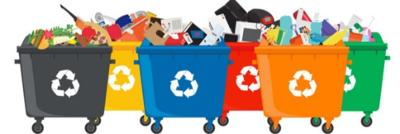PVC is one of the world's most widely used plastics. It is highly versatile and can be recycled in many applications.
Whether you have off-cuts or used products, we can take them back. Help us to recycle - your support in this process is crucial.
In return, your offcuts will be recycled into strips and panels or, depending on quality, sent on to suitable recycling circuits (cable manufacture, shoe soles, etc.). Your returns won't end up in landfill - we're determined that they should all be recycled.
The value of your returns is invaluable to the environment.
How do we recover and recycle your off-cuts?
It's simple: we send you empty crates in which you can deposit your offcuts.
When the crates are full, we take them back and the material is used to make new, recycled products.
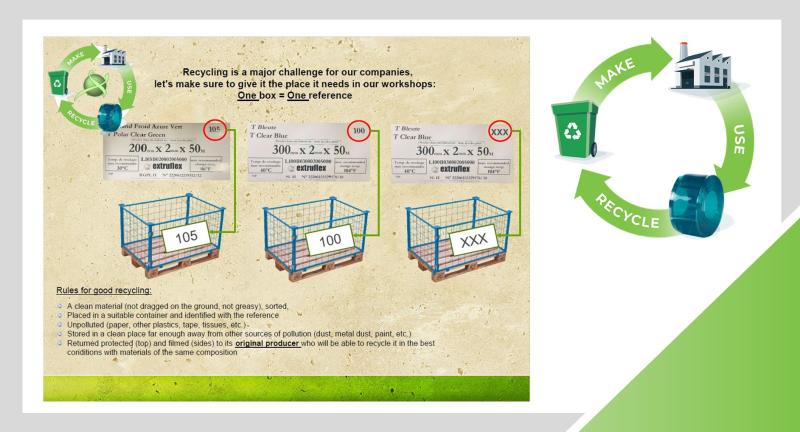
Download our complete recycling guide
What about used products?
The recyclability of used products depends on their cleanliness and quality. It is essential that these materials be returned to us;
- Sorted: We do not take back garbage cans. Returns must consist solely of soft PVC from strips or panels. We do not take back other objects made of rigid or flexible PVC, PE, PET, PP, ABS, etc… and even less so cups, used paper and cigarette butts! Thank you in advance for your understanding 👍
- Clean and free of foreign matter: Returns must be free of all metal parts (hanging plates, rivets, wires, etc.) as well as stones, adhesives and wires of any kind.
- Extruflex products: To protect our workers from potentially toxic additives and to provide you with a high-quality product, we can only take back products manufactured by Extruflex.
In case, and despite your best efforts, your returns can't be recycled into our products, we guarantee to return them to the appropriate recycling channels so that they don't end up in landfill. That's our commitment !
Strips are easy to uninstall. They are single-layer, which makes them easier to recycle. Let's seize this opportunity together to keep them out of landfill as much as possible. It's everyone's responsibility.
What happens to your returns?
Depending on the quality of the returns, they can be recycled in our products or for other uses.
The cleanest products can be recycled in our "recycled" range.
Failing that, the material will find a second life in electrical cables, pipes, insulation and sealing products, or in the manufacture of soles. If you're interested, please contact us.
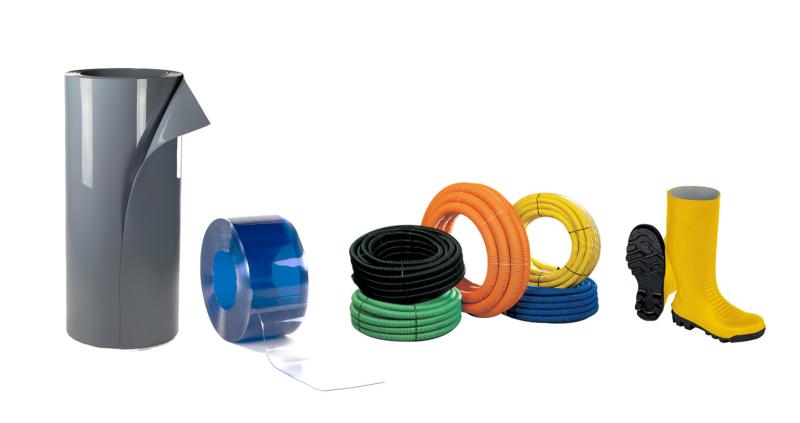
Find out more about PVC and recycling!
PVC is derived from :
- 57% sea salt,
- 43% petroleum derivatives
Discovered in 1835 by Henri Victor Regnault, PVC is highly resistant to water, chemicals and fire. PVC is weather-resistant, easy to clean and long-lasting (30 to 50 years).
PVC is mainly used in the construction of windows and pipes, but is also used in the automotive and door industries, as well as in many everyday products (packaging, coated textiles, tarpaulins, etc.).
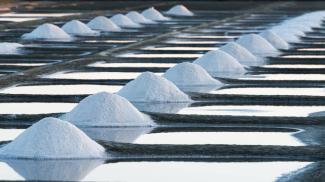
PVC recycling methods
There are two main ways to recycle PVC;
- Mechanical recycling. This is the mechanical treatment of waste. PVC is ground into small particles and cleaned. The particles can then be remelted and reused, with or without new material, to make the same products or new ones.
- Chemical recycling. Several chemical processes such as pyrolysis or hydrolysis are used to convert waste into reusable components. The resulting products, such as sodium chloride, calcium chloride and hydrocarbon products, can be used to produce PVC, raw materials or fuels.
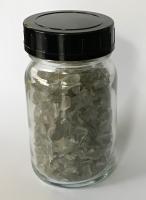
Recovering PVC for further processing
PVC is a powder that is mixed with a plasticizer to make it flexible. The resulting mixture is then extruded into the desired shape. Other additives are added to enable extrusion and give it special properties for use (anti-UV, coloring, fire resistance, etc.).
- PVC is 100% recyclable. When recycled, it significantly reduces the carbon footprint compared to production with new material. Recycling saves energy and avoids extracting more carbon from the soil.
- PVC is collected at waste collection centers and in containers provided by towns and cities. Dumpsters are also set up on construction sites to collect waste. It is also possible to take your PVC offcuts or waste to reprocessing centers.
- In addition to current collection solutions, Extruflex can organize the return of your offcuts to our factory.
EXTRUFLEX recycles all its PVC waste. When it can't be reused directly on our premises, the waste is shredded and sent to recycling companies for reworking into new products.
To reduce the overall quantity of waste and its carbon footprint, EXTRUFLEX offers its customers the possibility of recovering their off-cuts and used products.
Our environment is precious, and needs everyone's attention every day.
